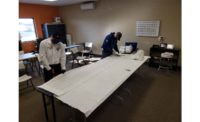The western U.S. suffered through historic heat this summer, the East Coast was drenched by tropical cyclones, and windstorms struck in the middle of the country. It’s been a few years of this kind of extreme weather, and it’s an issue HVAC contractors need to deal with. Lennox International recently released some guidance to help contractors better serve their customers when it comes to preparing for and responding to these events.
In many ways, the best way to prepare for a natural disaster is to provide the maintenance HVAC contractors recommend anyway, said Tim Brizendine, director of product management at Lennox. This means changing the filters regularly, checking the refrigerant, and doing an overall inspection to make sure everything is in working order.
“If your unit’s not fully working — maybe you have some clogged filters or not enough refrigerant in it — that’s going to minimize the capacity we’re going to get out of it,” Brizendine said. “On a normal day, we might be OK. As we start having these extremes, the system can’t keep up and it keeps running longer and longer at higher pressures, and that can do more damage.”
Hot and Cold Where It Shouldn’t Be
This was demonstrated at both extremes this past year. Texas endured a historic streak of cold weather, while the Pacific Northwest sweltered through the summer. Both conditions are more than uncomfortable — they can be deadly.
“It can be dangerous without cooling in extreme heat or heating in extreme cold,” Brizendine said.
The EPA reports that some estimates put the number of deaths due to extreme heat at 1,300 per year. Even more people die from extreme cold. In areas that experience these temperatures rarely, or rarely have in the past, buildings aren’t designed to retain heat or cool themselves. This makes mechanical heating and cooling even more important.
The types of equipment installed may not match the needs of extreme weather. Many heat pumps in Texas were overwhelmed, as were condensing furnaces placed in people’s attics. Brizendine said contractors need to work with their customers when extreme weather events start.
This preparedness may include helping them shut down systems and turn off gas lines. HVAC contractors can add these services to existing plans with their customers. Some contractors may take it as far as helping to place sandbags around outdoor equipment, Brizendine said.
“A lot of people wouldn’t know what to do or how to do It.,” he said.
Caution Becomes Code
Flooding has been a major issue in many places this summer. States that often fall in the paths of tropical cyclones are more used to this problem, but it happened everywhere this year. A small town in Tennessee was swept away when it received 15 inches of rain in less than 12 hours. HVAC contractors may want to consider offering elevated units to their customers.
Some preventive measures could become part of an area’s building codes. Florida already has rules for securing HVAC equipment against the wind. Brizendine said Miami-Dade has some of the most inclusive codes, if contractors want a guide.
Lennox employees know about the threat of extreme weather firsthand. The company’s manufacturing plant in Marshalltown, Iowa, was hit by a tornado in 2019. Brizendine said company management learned from that to plan ahead. He said that’s the best advice for HVAC contractors, who will be facing the same conditions as their customers when extreme weather hits.
The best time to promote extreme weather services is now. Just as interest in IAQ grew in 2020, interest in weather solutions is growing now, Brizendine said. This happens in every region after such an event. Just ask anyone who sells generators.








